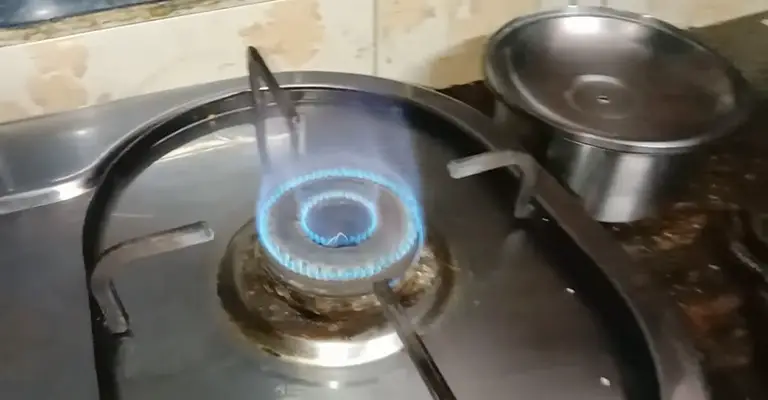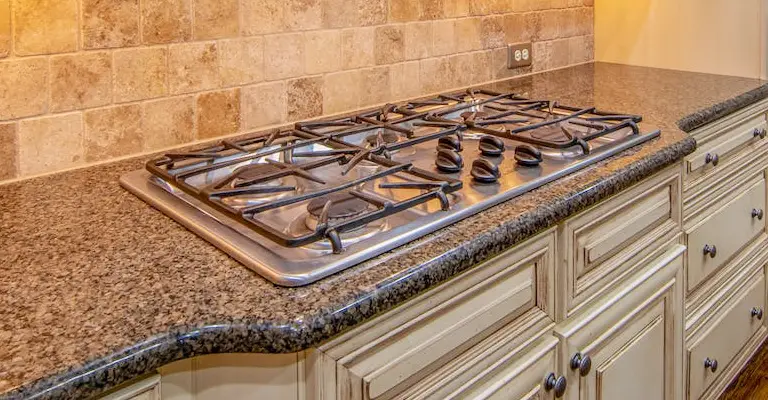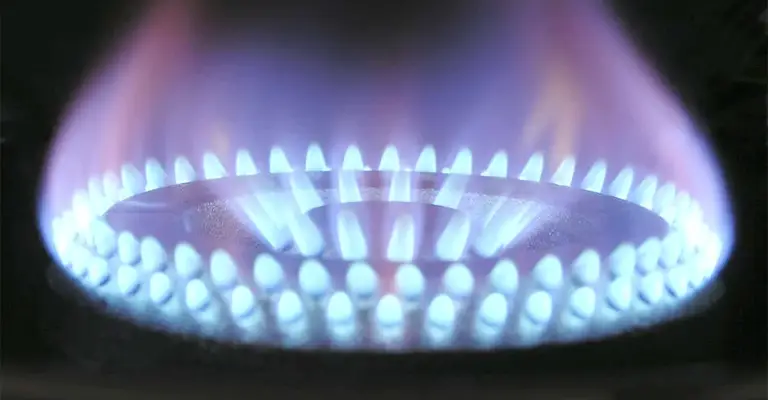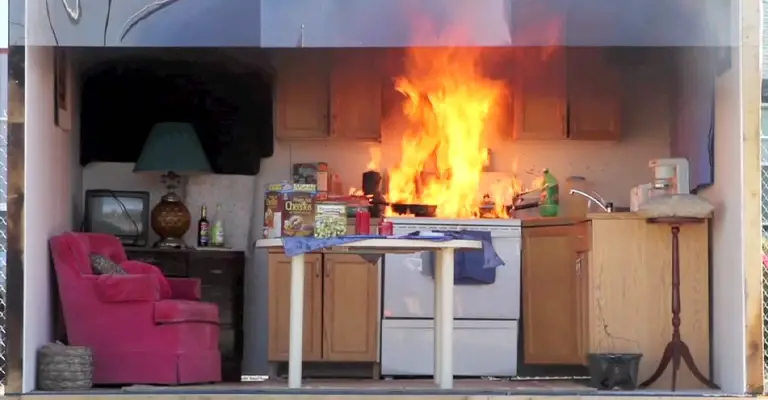We’ve all had those moments of distraction when we’re cooking, and somehow, we forget to ignite the gas flame on the stove. It’s an easy mistake to make, but it can also be alarming once you realize it.
Leaving the gas stove on without a flame should eventually dissipate, and the odor will disappear. Your stove, however, will explode if something is wrong with it or if it is not vented correctly.
The best thing you can do to freshen up your house is to turn off your stove valve and open all the windows if you’re ever unsure.
Accidentally Left the Gas Stove On Without Flame For An Hour!
The risk of a gas stove going unattended without a flame increases when it is left on without a flame. When this happens, it is critical that we take steps to prevent it and we know what to do if it does.
Usually, people forget to turn off the gas stove after they have finished cooking, thus accidentally leaving it on without a flame.
This could result in an accumulation of gas in the area, which could ignite and cause a fire or explosion. If people want to prevent such an accident from occurring, they should always ensure the stove is turned off after using it.
Moreover, homeowners should also install carbon monoxide detectors to detect any build-up of toxic gases and address them immediately.
What To Do If You Leave The Gas Stove On Without Flame?

You can avoid this from occurring in your home by following a few simple steps.
1. Shut Off The Stove
To begin with, you should know how to turn off your gas stove in an emergency. Make sure to keep an eye on your stove when it’s turned on and turn it off thoroughly after using it.
2. Open Door Or Window
Open all your windows and doors in your house to ventilate the room. You’ll want to turn off the gas at the main valve, which is usually found near the meter.
Contact your gas company if you are having trouble finding it, and they will turn it off for you. Ensure that your stove is safe to use once the gas has been turned off by contacting a qualified technician.
3. Don’t Turn On!
If you smell gas, do not light a match or switch on any lights or electronics (such as the refrigerator) – immediately evacuate your home and call 911.
How Long To Air Out House After Gas Burner Left On?
When leaving a gas stove on without a flame, ensure your house is aired out shortly. You may need a few minutes or a few hours, depending on the size of your home.
Turn off the fans or air conditioners once you’ve opened all the doors and windows to prevent airborne contamination.
Leaving the house for a few hours should allow the gas to dissipate completely.
Accidentally Left the Gas Stove on Without Flame for a Few Hours

The safety risks associated with leaving a gas stove unattended for hours without a flame are enormous. Unvented gas can cause an explosion if it isn’t vented correctly.
Carbon monoxide poisoning can occur even after the gas is vented since it is still dangerous. An individual who is exposed to carbon monoxide will experience headaches, dizziness, nausea, and vomiting.
You should get fresh air immediately after exposure to carbon monoxide and consult poison control.
Accidentally Left Gas Stove on Without Flame Overnight
Researchers have discovered that leaving a gas stove unattended overnight is more dangerous than was previously believed. According to the National Fire Protection Association, gas stoves that are not lit for more than two hours may cause an explosion and fire.
In addition, the risk of explosion and fire increases if the gas stove is located in an enclosed area.
Following the National Fire Protection Association, gas stoves should never be left unattended, particularly for prolonged periods.
How to Prevent Accidentally Left Gas Stove on Without Flame

Knowing how to prevent gas stove fires or explosions is essential if they are left on without flame is essential. It is best to prevent this from happening by implementing a few safety measures.
1. Automatic Shutoff Device
To ensure the safety of your property, consider investing in an automatic shutoff device. Gas stoves with these devices turn off automatically if left unattended for a certain period – usually between fifteen and twenty minutes – preventing accidental fires.
2. Natural Gas Detector Alarm
Installing a natural gas detector alarm is vital to ensure safety in any part of the home where gas is used.
An automatic gas detector detects methane and other gases that may be present due to a leak in a cooking appliance.
If any issues arise, the alarm will sound an early warning when it detects dangerous levels of these gases.
Some of these alarms offer remote notifications via smartphone or other connected devices, allowing homeowners to take action even when they are away from the house.
What Happens If You Smell Gas For Hours?
You will usually smell natural gas if you leak. Natural gas is odourless, but we add a rotten egg smell to it to help you detect leaks. Immediately leave the house if you smell gas and contact your gas company or 911.
Is It Dangerous To Leave A Gas Stove On?
You can be very dangerous if you leave your gas stove on. The gas stove in the kitchen is especially dangerous if left unattended – which, by the way, is the most common cause of a kitchen fire.
The Danger Of Accidentally Left Gas Stove On Without Flame
The most common fuel for heating and cooking at home is natural gas. Aside from being dangerous, it’s also a risky one.
The explosions and fires caused by natural gas leaks each year are thousands, many of which are caused by people accidentally leaving their gas stoves on without a flame.
Gas stoves without flame pose the following dangers:
1. Fire Danger
A fire can start when a suitable gas stove is on without a flame. Because of this, if there is no air in an oven or chimney, the gas on a gas stove will escape and cause a fire.
If left to operate independently, this gas can generate enough heat to ignite something else, causing a household catastrophe.
If sufficient air surrounds a spark, even the smallest spark can spark a fire, and all it takes is flipping a switch to start one!
2. Poisoning
There is no carbon monoxide in the gas itself; it is a spin-off of incomplete combustion. The fuel cannot be adequately burned when there is inadequate oxygen in a room.
In case of a fire or light out, or if the flame does not ignite, CO will build up.
As a poisonous gas that has no odor or taste, carbon monoxide is very dangerous. Consequently, carbon monoxide detectors and alarms are becoming more commonplace in homes.
Too much carbon monoxide symptoms include dizziness, headaches, nausea, and, in some cases,, loss of consciousness.
Should You Open Windows If You Smell Gas?
When you smell gas, opening a window and getting some fresh air is vital. Ensure you don’t turn any lights on or off, and don’t try to switch off the gas. You should evacuate the building immediately and contact your gas company or 911.
How Long Does It Take For Natural Gas To Dissipate?
Gases come in two types and dissipate differently.
- Gases such as propane dissipate within approximately two hours
- About an hour after the gas is ignited, it dissipates
Since gas leaks take an hour or two to dissipate, the safety recommendations are not to turn on electric appliances or ignite a flame (for example, lighting a candle or cigarette) in a house with a possible leak. Also, it’s the reason why you should leave the house until first responders have cleared it.
Can You Get Carbon Monoxide Poisoning From A Gas Stove Left On?
A gas stove that is not lit can produce carbon monoxide poisoning, even when there is no flame. As a result of its operation, a gas stove emits carbon monoxide gas. An inhalation of carbon monoxide can be fatal. The gas is colorless and odorless.
A person poisoned by carbon monoxide may suffer headaches, dizziness, nausea, and vomiting. Getting medical attention immediately after you think you’ve been exposed to carbon monoxide is important.
How Long Does It Take To Get Carbon Monoxide Poisoning From A Stove?
Several factors contribute to this question, including what type of stove you have, the size of the room, and how the door is positioned.
Despite this, carbon monoxide poisoning will occur very quickly, even if no flame is present.
If you believe you have left your gas stove on without a flame, it is essential to get fresh air into the room and call 911.
Can You Smell Carbon Monoxide From Stove?
Carbon monoxide may be smelt if you have left your gas stove on without a flame. It is odorless, so you cannot tell when it is present without a carbon monoxide detector.
If you do not have one, open some windows and doors to let the area breathe. When you feel dizzy or lightheaded, leave the area and get medical help immediately.
How Long Can You Leave A Gas Stove On?
Always make sure your gas stove is off when you’re not cooking. Regarding safety, there is no set “number of hours.”
Carbon monoxide emissions are hazardous since they can make you ill and even kill you. In addition, there is the risk of fire if a pot of food is left unattended on the stove.
When a pot is left unattended on a burner, whatever is inside will eventually boil over or burn, which may cause a fire.
Do Gas Stoves Turn Off Automatically?
Some gas kitchen ranges have an automatic shutoff device that shuts off the gas supply to the appliance when it is not in use. You may want to contact the manufacturer or check the manuals for your particular model.
You can purchase and install an automatic shutoff device for your family’s safety if your gas stove doesn’t come with one.
The Bottom Line
Walking away from your gas stove after it’s been turned on is never recommended, but sometimes, a simple distraction can create this scenario. Although some models have an automatic shutoff for these situations, the best policy is to be always cautious.
When you leave your gas stove on without a flame for a while, such as 30 minutes or an hour, you still need to turn it off and allow the gas to dissipate before you can continue cooking.







